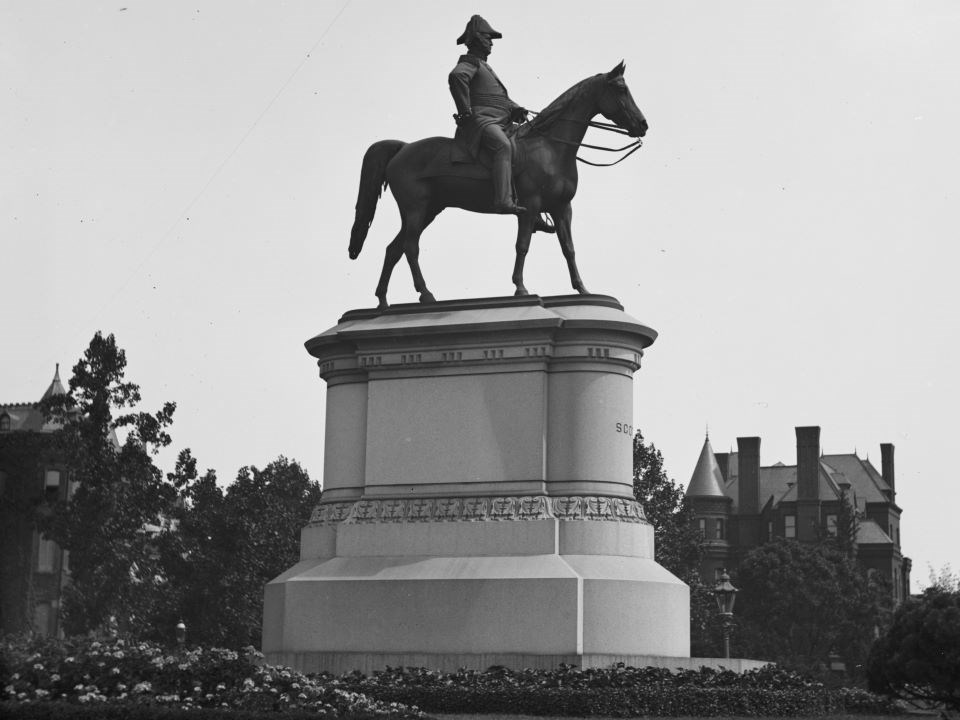
Six blocks north of the White House at the junction of 16th St and N St NW stands Scott Circle. At the center of the traffic circle is an equestrian statue of Brevet Lieutenant General Winfield Scott, an American hero from the War of 1812 to the Civil War. It was the first Civil War memorial to be dedicated in Washington, DC. This was done to honor a man who had influenced the course of American history for over 50 years. Just three years after the end of the American Revolution, Winfield Scott was born in Virginia in 1786. A son of a Revolutionary War veteran, Scott grew up learning from the founding generation of Americans. In 1808, after having practiced law for several years, Scott earned a commission as an artillery captain in the United States Army. Early in the War of 1812, Captain Scott was taken a prisoner of war at the Battle of Queenston Heights in Canada. Several months later, the British released Scott in a prisoner exchange and he returned to the battlefield. Despite the failure of the American campaign in Canada, Scott was responsible for several American victories leading to his promotion to brigadier general. After a British army invaded Washington, DC and burned the Capitol and White House, General Scott was recalled to the capital to command its defenses. By 1841 Major General Scott was the senior officer in the U.S. Army. During the Mexican- American War, Scott personally commanded the invasion of Vera Cruz and the subsequent campaign to capture Mexico City. During the campaign, Scott had his army work with the local Catholic churches to help minimize the suffering of the Mexican civilians. Many of the officers who later went on to command armies on both sides in the Civil War served under Scott during the Mexico City Campaign, including Ulysses S. Grant, Robert E. Lee, George McClellan and Joseph E. Johnston. Despite having taken leave to run as the Whig Candidate for president in 1852, Winfield Scott stayed in command of the United States Army until November 1861. He was responsible for mobilizing and training the Union army. After the Union defeat at the First Battle of Bull Run (Manassas), Lincoln replaced Scott with a younger general, George McClellan. Although Scott retired early in the war, it was his strategy, set in his Anaconda Plan, that ultimately led to the Union victory. During the war, the Lincoln administration consulted with Scott on several military and diplomatic matters. Winfield Scott died on May 29, 1866 and was laid to rest at the West Point Cemetery. Americans rushed to honor his memory. Numerous towns and counties across the country were named after Scott. Congress authorized his memorial in 1867. The veterans who had served with General Scott fundraised to pay for its construction. The equestrian statue was created by the renown sculptor Henry Kirke Brown. Complaints from veterans groups over Brown’s choice to depict General Scott riding a mare or female horse led the artist to weld on the appropriate appendage to give the horse an artistic sex change. The bronze for the sculpture came from melted down cannons captured by Scott’s soldiers during the Mexico City campaign. Dedicated in 1874 the visage of General Scott has since watched over the capital city of the country that Winfield Scott served for so long and so well. |
Last updated: October 6, 2021
